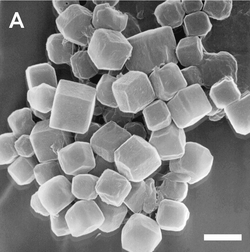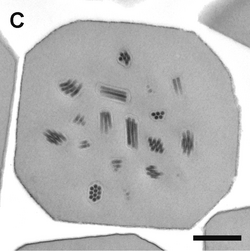Fmicb-08-01337-g002
Autor/Urheber:
Trevor Williams, Cristina Virto, Rosa Murillo, and Primitivo Caballero
Attribution:
Das Bild ist mit 'Attribution Required' markiert, aber es wurden keine Informationen über die Attribution bereitgestellt. Vermutlich wurde bei Verwendung des MediaWiki-Templates für die CC-BY Lizenzen der Parameter für die Attribution weggelassen. Autoren und Urheber finden für die korrekte Verwendung der Templates hier ein Beispiel.
Shortlink:
Quelle:
Größe:
1800 x 1155 Pixel (208725 Bytes)
Beschreibung:
Baculovirus transmission routes, mode of infection and dispersal pathways in the environment. After larvae ingest OBs while feeding on contaminated foliage a portion of the infected individuals develop lethal disease and release OBs onto the host plant where they can be transmitted to a susceptible host (red arrow). OBs on foliage are also washed by rainfall into the soil, from which they can be transported back to plants by biotic and abiotic factors (black arrows). Alternatively, insects that consume OBs but survive may continue to develop, pupate and emerge as covertly infected adults (blue arrows). These adults can disperse before laying eggs and passing the infection to their offspring. Vertical transmission can be sustain over several generations until some elicitor or stress factor triggers (orange arrow) the covert infection into lethal disease which returns to the horizontal transmission cycle (red arrows).
Lizenz:
Relevante Bilder
Relevante Artikel
BaculoviridaeDie Familie Baculoviridae (Baculoviren) umfasst doppelsträngig-zirkuläre filamentöse DNA-Viren. Sie befallen ausschließlich Wirbellose, ihr Hauptwirt sind Mottenlarven, jedoch sind über 600 Wirte beschrieben. Baculoviren werden in der Gentechnologie zur Erzeugung von komplexen Eukaryotenproteinen in Zellkulturen sowie zur Vektorklonierung verwendet. Auch werden sie in der Landwirtschaft zur Kontrolle von Schadinsekten eingesetzt. .. weiterlesen









